From Legacy to Liberation the Evolution of South Africa’ Diamond Industry
27th November 2024
The history of the South African diamond industry, like so many other aspects of life in that country, can be divided into two. The critical moment of separation was April 27, 1994, when for the first time free multiracial elections were held, and a black president, Nelson Mandela, was swept into power at the head of a new ruling party, the African National Congress.
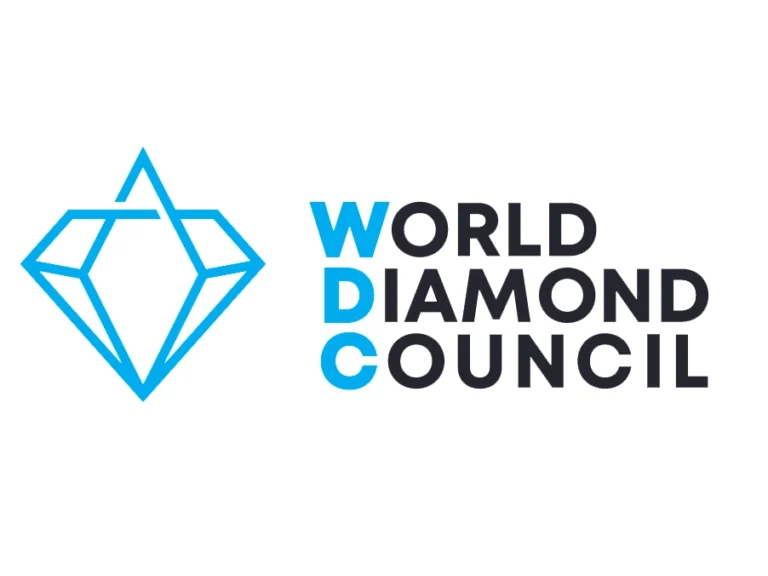
Written by Steven Benson for the World Diamond Council
Decline of South Africa’s Share in Diamond Production
Already, by then, the country’s extraordinary share of the world’s known precious natural resources was on the decline. In 1994, despite the buoyant political mood, all of the once dominant major gold mining houses, with the exception of Johannesburg Consolidated Investments (JCI), reported lower profits. The country’s share of the world’s rough diamond production – a category South Africa had led for a century through to the 1970s, when the mines in Botswana and Australia came online – was now only 11 percent. But the nation was still the world’s leading producer of platinum, with its output of about 90 tons in 1993 accounting for almost 49 percent of world production.
Continued Influence of South African Mining Giants
Nonetheless, South Africa remained a very influential player, for its years of market dominance had produced a bevy of the world’s most influential mining companies, and none more so than the Anglo American and De Beers conglomerates, which were interconnected and together represented a good portion of the most important players in the gold, platinum, and diamond sectors. Controlled by the Oppenheimer family, they had spread their wings beyond South Africa’s borders, as new sources of production were discovered. And, through investments and sales agreements, had largely managed to ensure that, while mining operations had become more widely distributed, the balance of power remained centered at the Anglo American headquarters in Main Street, Johannesburg, and at 36 Stockdale Street, Kimberley, the historic headquarters of De Beers.
Economic Disempowerment Under Apartheid
But despite its overwhelmingly powerful position internationally, prior to 1994 the South African diamond sector was never a catalyst for cross-the-board economic empowerment, at the very least at home, where in many senses it had been an agent of disempowerment. De Beers’ founder, Cecil John Rhodes, was most probably the most prominent champion of British colonial power in all of Africa. The Oppenheimers who succeeded him were definitely more circumspect, supporting progressive causes and seeking to nudge the country toward black majority rule.
The Contradictions of Apartheid and Mining Profits
But the apartheid system by which South Africa was governed with an iron fist depended on the revenues being generated by the mining companies, who themselves were reliant on the cheap labor provided by their disenfranchised countrymen and migrant laborers from elsewhere in Africa. In 1980, the mining sector accounted for more than 20 percent of the country’s GDP. At the same time, the standard of living and the economic prospects for white South Africans, many living in first-world cities with neatly manicured suburbs, provided a stark contrast to the desperate third-world existence experienced by the overwhelming majority of their black and brown compatriots.
The Obstacle of Privately-Owned Mineral Rights
The historic election in 1994 had been preceded by a transitional period beginning in February 1990, when South Africa’s last white president, Frederick de Klerk, announced the release of Nelson Mandela from prison, as well as the lifting of the bans on the African National Congress (ANC), the Pan-Africanist Congress, and the South African Communist Party. During this four-year period, negotiations took place for a new democratic constitution. At the same time, a variety of working groups met to discuss the dismantling of the legal system that had governed the country not only since its formation in 1910, as a union of four previously independent republics, but also through the 250 years of colonial rule before then. One of these working groups dealt with the very thorny issue of mineral rights.
The ANC’s Position on Mineral Rights
The ANC position on mineral rights had already been expressed in its foundational Freedom Charter, which was adopted in 1955. It stated that the “mineral wealth beneath the soil…shall be transferred to the ownership of the people as a whole.”
The Roman-Dutch Legal System and Its Influence
In some respects, the ANC position mirrored the legal status of mineral rights in most other countries, whereby they are held by the State, and then are leased to bodies that seek to prospect or mine them. But in the old South Africa, most of the mineral rights were privately held. The country operated within what was known as a Roman-Dutch legal system, which was first introduced when Holland colonized the Cape of Good Hope in 1652. Thus, it inherited a principle rule from ancient Roman common law, which stated that the owner of the land was not the owner of the surface only, but the space above and below it as well.
The Cradock Proclamation and State Control of Mining Rights
In 1806, the Cape Colony came under British rule; however, the Roman-Dutch legal system was retained as the common law. But it was increasingly influenced by English jurisprudence. In 1813, a decree called the Cradock Proclamation declared that the State could lease the “right to mine” precious stones, gold, and silver to whoever it pleased, even though those mineral rights remained privately owned.
Challenges of Ownership and Mineral Rights
Most of the privately owned property was agricultural, and farmers were inclined to bequeath the right to farm the land to their oldest child, while splitting the mineral rights among the other heirs. Thus, over the generations, while a property’s farming rights remained held by a single individual or nuclear family, ownership of the minerals below the surface became increasingly diffuse, and difficult to track.
Impact on Larger Mining Companies
This played into the hands of the larger mining companies, which had the capacity to search for, identify, and reach agreements with mineral rights owners on properties that they were interested in prospecting or mining. It also gave rise to suspicions that companies that had obtained those rights may choose not to exploit them, so as not to provide competition to their existing mines.
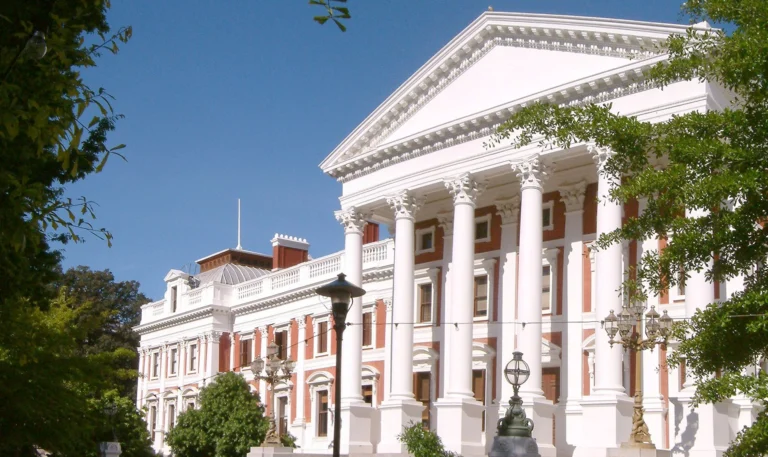
Formation of the Mineral Policy Process Steering Committee
In April 1995, a year after the transformative election, a tripartite body called the Mineral Policy Process Steering Committee, comprising representatives of business, labor, and government, was established to manage the formulation of a new approach to mineral rights ownership. A year later it issued a white paper, which expressly stated that “mineral rights must be returned to the State and a system of State-held mineral rights, which are leased to companies, be introduced.”
Green Paper and Public Scrutiny
In February 1998, a green paper was released for public scrutiny. Reiterating the objective that all mineral rights be vested in the State, it also proposed that “Government will promote minerals development by applying the ‘use it or lose it principle.’”
Comprehensive Restructuring with the Mineral and Petroleum Resources Development Act
But it was not until 2002, fully eight years after the end of apartheid rule, that a comprehensive restructuring of the country’s mining sector took place. The Mineral and Petroleum Resources Development Act that was passed by the South African parliament that year outlined a series of defined objectives meant to balance the mining industry’s ability to create wealth from natural mineral resources, while serving the environmental and social needs of the greater society.
The Aims of the New Mining Law
What the new law sought to achieve, essentially, was to convert from a system of private ownership of mineral rights to a system where these are exclusively State owned. The law also sought to apply pressure on industry to beneficiate within South Africa’s borders, require mining companies to consider the social welfare of people working on and living near mining operations, and stimulate growth in the small-scale mining industry through easy access to mineral resources and information about them.
The Black Economic Empowerment (BEE) Strategy
The Slow Process of Economic Power Transfer
While the 1994 election had shifted the political balance of strength almost overnight, the process of transferring economic power was considerably slower. Private property and businesses were overwhelmingly white-owned, with a study in 1991 showing that, while whites accounted for less than 13 percent of the country’s population (they account for less than 7.5 percent today), average white incomes were 12 times greater than average black incomes.
The ANC’s Approach to Nationalization
But in stark contrast to what happened in many other previously colonial nations, sometimes with disastrous effects, the ANC did not endorse the massive nationalization of white-owned assets. Instead, it introduced an ambitious Black Economic Empowerment (BEE) strategy, the stated goal of which was to empower black people and redistribute wealth across the full spectrum of the country’s population.
Early Stages of BEE and De Beers’ Involvement
The early stages of BEE focused on promoting black ownership of large businesses, among them De Beers Consolidated Mines, the South African arm of the diamond consortium. In 2005, Nicky Oppenheimer, the chairman of De Beers, agreed with the South African government to sell 26 percent of DBCM to a black empowerment group, called Ponahalo Investments, which had been formed expressly to complete the purchase.

Changes in De Beers’ Leadership and Ownership
In 2010, the De Beers Group announced that Barend Petersen would take over from Nicky Oppenheimer as DBCM executive chairperson. Already a non-executive director of Anglo American South Africa and of De Beers Société Anonyme in Luxembourg, Peterson also was a director and shareholder of Ponahalo.
Other BEE Consortia in the Diamond Business
A number of other BEE consortia acquired interests in the diamond business. Among them was Mvelaphanda Holdings, led by a former ANC official, Tokyo Sexwale, which in 1998 obtained a major shareholding in Trans Hex, an alluvial miner that at the time was South Africa’s second-largest producer. For its part, De Beers sold a portion of its interests in the open-pit Marsfontein mine, in Limpopo province, to a BEE consortium composed of New Diamond Corporation, Domba Investments, and Vuwani Projects.
De Beers’ Shift in Headquarters and Ownership Structure
It should be noted that, by then, De Beers as a corporation was no longer South African. Its main holding company had been transferred outside the country in 2000, incorporating in Luxembourg as De Beers Société Anonyme. It was reclassified as De Beers PLC in 2017, with its head office in Jersey. In practical terms, the De Beers Group has been managed primarily from London for more than two decades, although its sales operation is now mainly centered in Botswana.
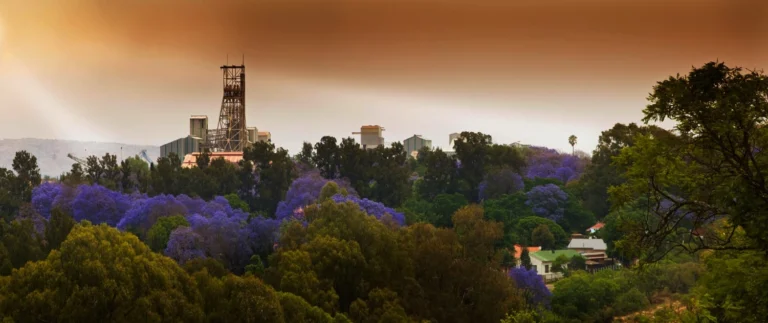
De Beers Slims Down Its Mining Profile in South Africa
By the 1990s, De Beers’ mining operation in South Africa was a mere shadow of what it once had been. In its heyday, DBCM operated the Kimberley, De Beers, Dutoitspan, Wesselton and Finsch mines in what today is called the Northern Cape province, the Koffiefontein mine in the Free State province, and the Premier mine in Gauteng, where in 1905 the 3,106-carat Cullinan Diamond had been discovered. Premier’s name was changed to Cullinan in 2003, in celebration of its 100th year of operation.
In the 1990s, De Beers brought on stream the Venetia mine in what is today called the Limpopo province and in 2008 the smaller Voorspoed mine in the Free State, which was shut down in 2018 after 10 years of operation. De Beers’ marine mining operation, headquartered in Cape Town, operated off the northwest coast of the country and was the forerunner to what today is a considerably larger marine mining operation across the border in Namibia.
But De Beers’ South African operation was always worth more than the sum of its collective parts, and in many respects, it was the birthplace of the diamond industry as we know it today. A direct line can be drawn from the discovery of diamonds in Kimberley in 1869, to the development of De Beers as the world’s largest producer and distributor of rough diamonds, and then to its now legendary “diamonds are forever” campaign, first launched in the United States in the 1940s, which turned the gemstone into a mass consumer product and consolidated the notion that every bride should be married with a diamond ring on her finger. For South Africa, the discovery of diamonds preceded the discovery of gold, laying the foundations of a national mining industry that today is among the world’s most sophisticated, well-educated, and trained.
It was economics, not politics, that led De Beers to reduce its South African profile, shutting down or selling off most of its concessions. Today, Venetia is its only significant facility, producing about 4.5 million carats per year, accounting for up to 40 percent of the country’s total production.
Many of De Beers’ historic concessions were purchased by what is currently the country’s other major producer, Petra Diamonds, which is also active in Botswana, Angola, and Tanzania.

In 2007, Petra acquired a majority interest in the Koffiefontein mine, and in 2007, a 37 percent interest in Cullinan, which was increased to 74 percent in 2009. In 2010, it purchased a majority interest in the Kimberley underground mine, and in 2011, a majority interest in the Finsch mine. By 2016, it had obtained a 49.9 percent stake in all of the Kimberley mines.
Taking a Chance on ASM
The country has a host of small-scale mining operations, almost all alluvial, operating in areas of the Northern Cape and North West provinces. Those that operate legally do so within the framework of the Minerals and Petroleum Resources Development Act of 2002, which envisioned that previously disadvantaged South Africans could use small-scale mining as a path to a new life. The act also established the Directorate of Small-Scale Mining to develop and address the challenges faced by the ASM sector.
But much of the artisanal mining activity is illegal, or what is known in local parlance as Zama Zama, which loosely translates to “take a chance” in the isiZulu language. Most of the Zama Zama miners are reportedly not South African, but rather illegal migrants, mainly from Zimbabwe and Mozambique.
In 2018, Petra launched an initiative for artisanal miners at Koffiefontein, providing them access to some of its tailings, which are piles of already mined and processed kimberlitic ore in which small numbers of diamonds can still be found. The mining company said it believed there is a space for artisanal miners to co-exist with formalized mining because they can often profitably recover diamonds from resources that would be unprofitable for a larger operator. It was Petra’s second ASM initiative, following the establishment of a similar tailings project in Kimberley.
The Ups and Downs of Beneficiation
The South African diamond sector has never been one-dimensional and has included alongside its rough production industry both a vibrant trade in loose diamonds and a cutting and polishing sector, which in the past was responsible for processing some of the most famous jewels ever produced. It, too, was transformed by the country’s transition to majority rule.
A key player became a government body called the State Diamond Trader, which operated under the auspices of the Ministry of Mineral Resources and Energy. Created by the authority of the Diamond Act, a law passed in 1986 during apartheid rule, in the new South Africa it was given a mandate to buy and sell rough diamonds with the purpose of promoting equitable access to the country’s diamond resources. To do so, it became eligible to purchase up to 10 percent of the run-of-mine production from all diamond producers in South Africa, which it could sell to registered customers.
The Launch of Beneficiation in South Africa
In November 2004, during a conference in Antwerp, Belgium, the keynote speaker was the then-president of South Africa, Thabo Mbeki. He spoke for the first time of a new economic initiative adopted by his government, called beneficiation.
“I believe that it is both incumbent upon and would be of benefit to the international diamond industry to support and invest in the beneficiation and value-adding projects in African diamond-producing countries, to ensure economic sustainability beyond the depletion of the diamond resources,” he told the audience of industry professionals.
An early backer of the beneficiation program was De Beers, which encouraged clients to establish factories in South Africa, with a commitment to providing a steady supply of rough goods.
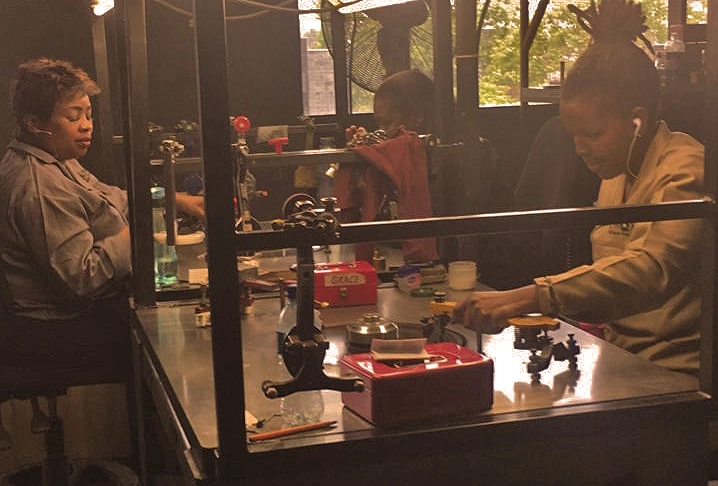
The Initial Success of Beneficiation
Initially, the results were positive, and by 2007 there were some 20 De Beers Sightholders operating in the country, most of them foreign-owned. The belief of many was that the guarantee of a regular rough supply, coupled with a relatively lower cost of labor compared to Belgium or Israel, would provide a winning combination.
Decline in the Diamond Sector
However, the optimism was short-lived. Over a 10-year period, South African rough diamond production declined from a peak of $15.2 billion in 2007 to $8.3 billion in 2016. This substantially reduced the pool of supply being made available by the State Diamond Trader. To complicate matters, the adoption of new technologies in the country was slow compared to the lower-cost manufacturing centers in India and China, at the same time that workers’ wages almost tripled. By 2017, it reportedly cost more than $150 per carat to cut diamonds in South Africa, putting it only slightly behind Israel, Belgium, and the United States, all of which specialized in large, high-value stones, which was the only category in which South Africa could reasonably compete.
The number of South African diamond cutters declined from almost 5,000 in the 1990s to just a few hundred by 2017, and most of the Sightholder-owned factories shut down. Some eventually set up plants north of the border, in Botswana and Namibia, where beneficiation programs based on the South African model had been set up.
South Africa’s ‘Born Free’ Generation
Changing course, in 2016 De Beers announced a new project called the Enterprise Development Project for Diamond Beneficiators. It involved a program through which black-owned businesses would receive a regular supply of rough, along with a comprehensive training and support program. At the conclusion of the program, each company could apply for De Beers Accredited Buyer status and, if successful, eventually may achieve full Sightholder status.
Speaking at the time, the then newly appointed CEO of De Beers Group, Bruce Cleaver, remarked that if “we can lay a successful platform for developing young beneficiators, then this project will go a long way towards creating a sustainable and meaningful diamond development pathway for other young local cutters and polishers for many years to come.”
The three-year program was facilitated by De Beers Sightholder Sales South Africa, in partnership with Raizcorp, a business incubation expert. It included formal, curriculum-based learning in parallel with mentorship in business strategy, finance, sales, marketing, and personal development.

Jo Mathole and Khomotso Ramodipa: Young South African Entrepreneurs
Among the young South Africans joining the program were sisters Jo Mathole and Khomotso Ramodipa, the owners of Kwame Diamonds, a South African diamond cutting and polishing company founded in 2008. Starting out as traders, Ms Mathole had also worked for one of the foreign investors that had set up a beneficiation factory in South Africa, eventually becoming the first woman in the country to manage a De Beers sightholder company.
Sisters and diamond industry entrepreneurs Jo Mathole (left) and Khomotso Ramodipa, who were among the first to sign on to the Enterprise Development Project for Diamond Beneficiators (Photo credit: De Beers).
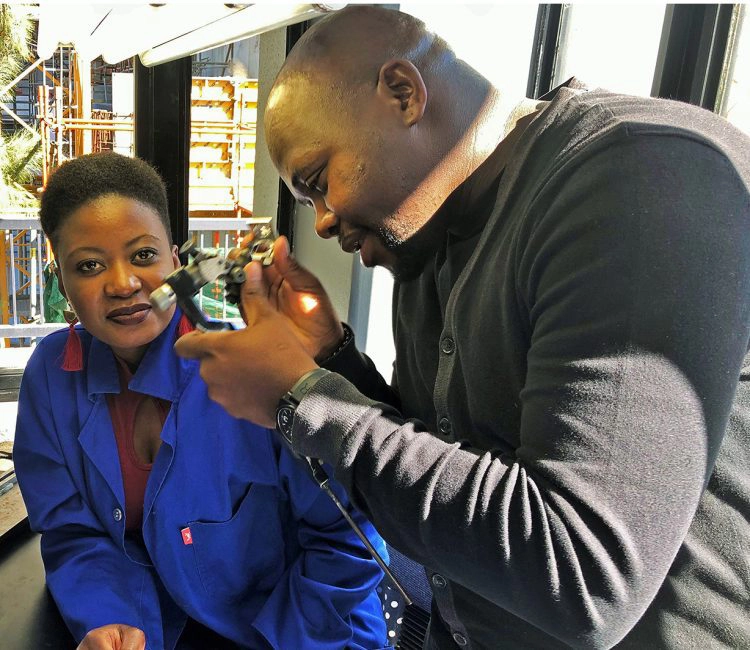
Molefi Letsiki: A Trailblazer in the South African Diamond Industry
Another young black entrepreneur who signed up was Molefi Letsiki, who in 2005 had set up his own diamond cutting company. Starting out as a one-person operation, by the time he became part of the De Beers program, he was already employing 15 people. He was also a client of Petra Diamonds.
In July 2021, Mr Letsiki made his mark in the history of the South African diamond industry when he was elected the first black chair of the Diamond Dealers Club of South Africa, a diamond exchange that has anchored the country’s polished diamond trade since it was first established in 1947. In December 2022, his company was named as De Beers’ first black South African-owned Sightholder.
Molefi Letsiki Reflects on His Journey
“I am fortunate to have spent most of my living years in the new South Africa, the country that developed after the end of apartheid rule and the first all-race general election in 1994,” Mr Letsiki remarked in 2022, in an article he wrote for the WDC newsletter.
Molefi Letsiki examining a diamond in his Johannesburg polishing plant. He holds the distinction of being the first black chair of South Africa’s oldest diamond exchange, and his company is South Africa’s first black-owned Sightholder.
“During my childhood I experienced apartheid firsthand, however through all my working life I have been part of what we call the Born-Free Generation, which is made up of those South Africans who have lived in a world unshackled by the cruel political system that governed and limited the lives of our parents.”
South Africa’s Born Free Generation
Today, more than half of all South Africans were born after the 1994 election and can consider themselves fully fledged members of the Born Free Generation. They do not have first-hand memories of the apartheid era, but many are still very challenged. South Africa is the continent’s most industrialized nation, but its unemployment rate is one of the highest in the world.
In 2022, the World Bank ranked the country as the world’s most unequal nation, with the top 20 percent of earners accounting for more than 68 percent of income, and the bottom 40 percent earning only 7 percent. On the other hand, among the fastest-growing sectors of the population is the black middle class, which in 2023 was estimated to number 3.4 million people, making up about half of all middle-class citizens.
The country is clearly a work in progress, and the diamond industry remains part of that.
To Know More, visit World Diamond Council


